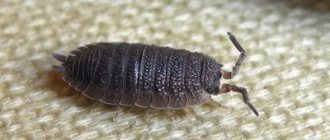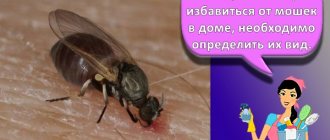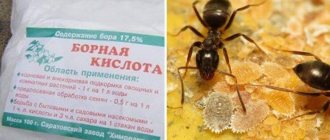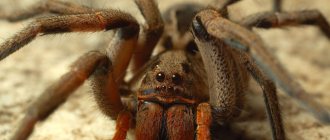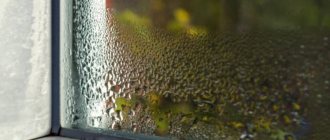Where do bugs come from in an apartment?
When the owners notice that black beetles have appeared in the room, despite the fact that there is no disorder in the room and the cleaning was carried out on time, the question immediately arises where they could come from.
Ways of appearance of beetles in an apartment:
- cracks in walls, window frames, into which small insects can easily crawl;
- ventilation shafts and openings in which protective nets are not installed;
- windows and vents, open for ventilation, can become an “entrance door” through which flying insects fly into the apartment;
- through risers of sewer and water pipes;
- black beetles appear in apartments in the summer, clinging to people’s shoes or clothes, thus penetrating the living rooms and kitchen;
- from a neighboring basement or attic.
Procedure for detecting bugs in the kitchen
If at least one bug was found, then it is necessary to inspect all products for the appearance of larvae or other individuals. At the slightest suspicion of the presence of bugs, cereals or other products must be disposed of. But first things first.
PHOTO: yaplakal.com A single bug will organize a whole colony of its own kind within a couple of days
Related article:
Habitats of pest beetles
Despite the fact that each type of insect has certain food preferences, you will have to check everything, including cookies, nuts and sweets. After all, if there is a shortage of their favorite product, beetles will move to new places, regardless of taste preferences.
If several beetles were found in one of the cabinets, it means the owner is on target. Insects do not go far from their homes, that is, the colony is somewhere nearby, in the same cabinet.
PHOTO: stroylenproekt.ru What wonderful Kuban, and most importantly, elite rice from the nearest store
Don't rely on sealed packages. The flour beetle, like the bread grinder, can easily gnaw through the shell, regardless of the material. This means everything will have to be checked. Well, or, as an option, throw it in a landfill, leaving not a crumb or grain in the house.
By the way, the inspection must be very thorough. The fact is that a bug like the bread grinder is a master of camouflage. He lives inside the grain he has gnawed out, eating up the remains. And the grinder emerges from its shell only when necessary to change its “edible house.”
PHOTO: shkpxxpx.glist.ru.net After a beetle has visited the grain, only an empty shell remains
Photos and names of black beetles
You can determine exactly what the black beetle in the house is called by its appearance and size, as well as its location. They can settle both in food and in furniture, carpets or wooden structures and walls.
The most common black beetles, which sometimes settle in an apartment or private house, are beetles or flour beetles. They received their second name because they prefer to eat cereals and other bulk products.
In total, there are 3 types of Khrushchak:
- large beetles - differ in their length (up to 13 mm);
- small – have a size of up to 3.6 mm;
- black - distinguished by black color.
Black bugs in the apartment
In addition to the flour beetle, there are other types of small black bugs in the apartment:
- skin beetles - small black insects up to 4 mm in size that feed on fur and leather products, paper from books, indoor plants and food (flour, nuts, cereals, meat, etc.) - live in closets, old clothes, crevices of furniture; dangerous because they can carry infections and helminths;
- carpet beetles - they settle in beds and carpets, feeding on old peeling human skin, hair and crumbs; they can render things unusable and also cause allergies in some people;
- fleas are small jumping parasites that bite painfully and can carry infection; they often appear in homes where cats and dogs live.
Types of skin beetles
There are more than 600 of them in nature, but only 7 of them are especially dangerous. And in order to get rid of an unpleasant neighborhood, it is necessary to find out its “pedigree”. Apartment conditions are not suitable for all individuals, which is good news. Only five species will be comfortable at home, but they can do just fine without fur and leather.
- Carpet beetle. These are dark brown individuals that feed on house dust. Often found in everyday life. Only the larvae are dangerous, since the adult beetle does not feed on anything; it uses up its previously accumulated reserves.
- Ham bug. Loves human houses; this is the most common species in the European part. It can be distinguished by its oblong body shape with black coloring and yellow areas on top.
- Carpet beetle Smirnov. This individual loves windows, window sills, and lamps. Brown bug 3 mm long.
- Museum and house beetle. It is rarely found in residential conditions, despite its name. Hiding in flower pots.
- Fur beetle. This is the most harmful type. In the apartment he eats mostly food. It is distinguished by its black spotted color.
The most common species are the Smirnov's leather beetle and the carpet beetle.
Big Khrushchak
According to the biological classification, Khrushchev beetles belong to the Darkling beetle family, numbering 11 species, of which only 3 are common in Russia and Moscow.
Khrushchak is a large black beetle up to 1.8 cm long, its body is flattened, and there are only 6 legs (3 pairs). The color of the body is black-brown and shiny, the abdomen has a reddish tint. Females lay 200 eggs. into the nest. The pest larva (popularly called a mealworm) is larger in size, up to 2.5 cm, and brownish-yellow in color. It feeds on grain, flour and bran. As the larva grows, it undergoes 4 molts.
The flour beetle chooses as habitats in the apartment those that are located near its favorite food. In nature, they prefer to live in tree hollows or rotten parts. The beetle's main diet consists of animal food (the corpses of small mammals and insects) and plant food.
Important!
When settling in an apartment, beetles look for food in the form of grain, flour, cereals or bran. They spoil food supplies, contaminating them with their excrement, skins from larvae and dead insects. In a short time, black bugs can multiply and infest all your kitchen cabinets and drawers.
Big and small Khrushchak
Mucoeds
They are polyphagous beetles, that is, their menu is very diverse. Three types can be found in apartments.
Surinamese
A beetle 3-3.5 mm long with a red-brown back. The pest is flat, very elongated in length, with a thin body. The pronotum has characteristic longitudinal “ribs”.
Prefers bakeries as a bottomless source of nutrition. But often, along with flour and cereals, it gets into apartments, where it infects other supplies. The vital activity of bugs leads to an increase in humidity in products, which is why mold forms in cereals.
Maximum lifespan 3 years. Usual 6-10 months. The life cycle is 27-51 days at a temperature of 29-35°C.
During her life, the female lays 43-285 eggs. At an ideal temperature of 27-29°C, the larvae hatch after 3-5 days. The larva grows up to 3 mm, has a yellow-white color and a brown head.
Red mukoed
The light brown beetle is approximately 2 times smaller than its Surinamese “brother”. In the apartment, the food supply, habitats and life cycle are similar to those of the Suriname mucoedeater. A distinctive feature of the red mucous eater is inactivity.
Mucoeds
Merchant beetle
A flat small beetle, 2.5 cm long. Almost completely identical to the Surinamese beetle in morphology and lifestyle, differing in eye size and head shape. The bugs crawl actively, moving to new habitats.
Small Khrushchak
The small flour beetle has a brown or red body color and causes considerable damage to the food supply of a person in an apartment. It is widespread in Russia and Ukraine, where it often causes spoilage of grain in granaries, mills and other places where bulk products are stored.
The red-brown beetle is smaller in size (up to 3.6 mm), but it loves to settle in various food supplies in the apartment: flour, nuts, dried fruits and other plant fruits.
On a note!
Unlike the large Khrushchak, the small one has wings and is able to fly. The males of such a flying insect have an abdomen rounded at the end and covered with hairs. In females, the tip of the body is bare; they are capable of laying up to 1 thousand eggs.
The larva of the small beetle has a flat shape and a length of up to 7 mm, the body color is yellow-brown (light or dark shades), the head is flattened. The body is covered with hairs and ends with 2 spines. The pupa is painted light yellow, and its body is shiny and completely naked. The development cycle of the flying black beetle is 20-120 days, and the growth rate directly depends on the amount of food and living conditions.
Black Khrushchak
The 3rd type of beetle has a darker, almost black body color, the size of which is up to 5.5 mm. Their body color is matte, the color varies from black to brown.
Unlike other species, small black beetles prefer to live only in heated rooms. By settling in the kitchens of people's houses and apartments, they are capable of ruining not only food products, but also glue, fabrics (knitwear and nylon) and other products. They are found much less frequently than their large and small counterparts. The larvae grow to a size of 12 mm.
Important!
However, once settled in an apartment, a colony of Khrushchak insects can cause a lot of harm. By feeding on the excrement of other pests (mice and rats), they can become carriers of infections and worms.
Black Khrushchak
Home thermobia
In living spaces, unpleasant-looking insects called silverfish often appear and settle for a long period of time. The bugs have no wings. An oblong body with a small head with antennae and three tails in the form of processes causes outright hostility among people. They get stuck in the darkened holes in the corners. Home thermobia settles in the bathrooms of apartments and country houses, causing damage to objects and coatings.
Small insects are not uncommon in the apartment. And it's not just fleas and cockroaches
But, taking certain precautions and following the clear instructions in the instructions when fighting all kinds of bugs, it is possible to achieve the desired effect, and no worms will appear in the apartment. Remember that only the owner will cope with the problem who treats the problem with full responsibility
Methods to combat bugs
If black beetles appear in the apartment, then first you should determine their type based on external signs.
Depending on the identification, you can use various control methods to help get rid of black beetles:
- Carpet beetles and carpet pests should be combated by treating carpets and furniture; first they must be wiped with a sponge soaked in a soap solution, and then with a vinegar solution; a day after treatment, carpets and furniture should be vacuumed well, and the contents of the bag should be thrown away, as there may be insect eggs in there;
- to destroy flour beetles, it is necessary to carefully sort through all reserves of bulk products (flour, cereals, sugar, etc.); if they are found, everything must be thrown away, because they are not suitable for consumption;
- inspect the contents of all cabinets for small black or red bugs, then make a solution of 1 tbsp. l. soda per 1 liter of water and treat all surfaces and shelves inside the cabinets, wash the dishes using detergents and pour boiling water over them;
- wash all surfaces in the kitchen with a solution of acetic acid or use boric acid powder, which should be rubbed into areas where parasites may live;
- treat the floor covering and baseboards with any aerosol containing an insecticide against insects (Dichlorvos, Combat, Raid, etc.);
- clothes should be boiled or washed in hot water (not lower than +60°C).
On a note!
The procedure for exterminating insects should be repeated 2 times a week for a month, since new generations of bugs will hatch from the laid eggs of insects, which also need to be destroyed.
If the measures taken do not help or there is no time to fight bugs in the apartment for a long time, then it is better to turn to professionals. There are companies that use special preparations to carry out disinfestation (extermination of pests) in any residential premises.
Fighting bugs in the house
Insect prevention measures
High-quality and regular cleaning is considered the best preventive measure against any insects.
This is especially true for the kitchen:
- It is better to keep all dry cereals, flour, sugar and other crumbly products in closed containers.
- Along the entire perimeter of the kitchen and in closets with clothes, you can hide special lavender tablets that will repel beetles.
- To ensure that beetles do not appear, you can periodically wash all kitchen surfaces with a solution of water and vinegar, soda or citric acid.
- Of course, you will have to take care of the cracks and the presence of screens on the windows.
Bark beetles and other inhabitants of wooden houses
In addition to the above beetles that settle in apartments, there are also specific species that live in a wooden house. Most often, insects enter the house along with contaminated building materials and pose a great danger to all wooden structures and furniture. They are capable of not only destroying valuable property in a short time, but also turning all the walls and structures of a building into dust.
They differ in that their main food is wood:
- bark beetles - a large group of beetles (750 species), the size of the insect is 5-10 mm, in the forest bark beetles carry out sanitary work, destroying rotten trees, and in a wooden house they are considered pests, they gnaw long passages in the wood and destroy it, insect larvae are capable of in a few years “eat” the whole house;
- grinders are long, oblong small bugs, 2-10 mm in size, black or brown in color, they are coleopteran insects, dangerous for wooden structures, furniture, books and cardboard, they also feed on grain reserves, making characteristic ticking sounds; at the slightest danger they pretend to be dead, black beetles are active in the house at night and can only be identified by rustling and other sounds;
- longhorned beetles are larger pests (up to 35 mm in size) of black, brown or blue-green color, with large mustaches (10 times longer than the body), the larvae are large, up to 3 cm in size, capable of damaging a wooden frame in a private house, transforming structures to complete ruin in a relatively short period of time, they prefer to settle in coniferous wood (in partitions, floors, on the roof, etc.).
Bark beetles
Interesting!
All beetles that chew on wooden walls or furniture in the house make a characteristic sound, similar to the ticking of a mechanical watch. In the old days, such parasites were called “death clocks”, due to the fact that their activity often led to the collapse of wooden houses and the death of their inhabitants.
The development of beetles that feed on wood follows the same pattern. Females lay eggs in crevices, from which larvae hatch and gnaw into wood walls. They gnaw passages in it and spoil the appearance and structure of wooden walls and ceilings. After the larvae transform into pupae, adults crawl to the surface.


